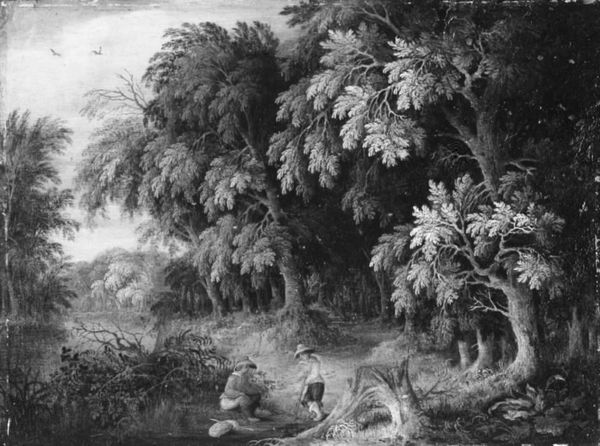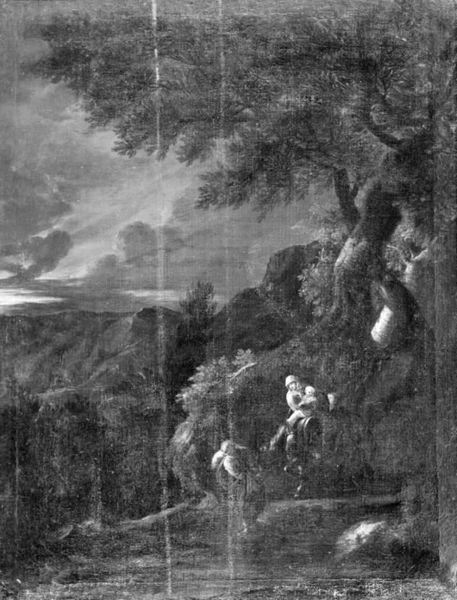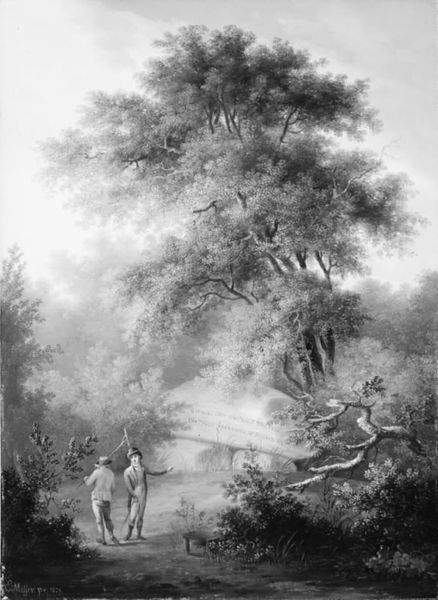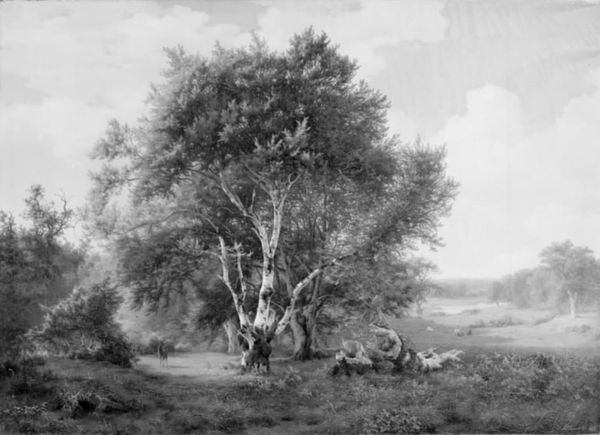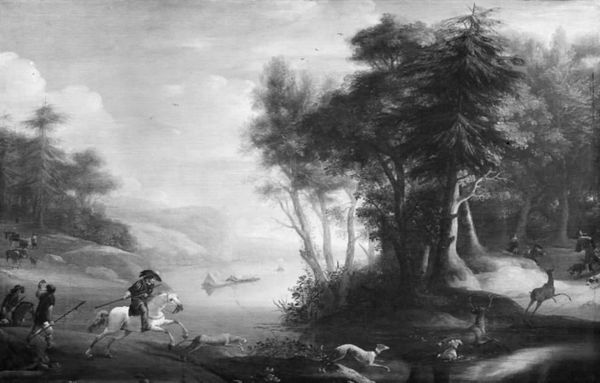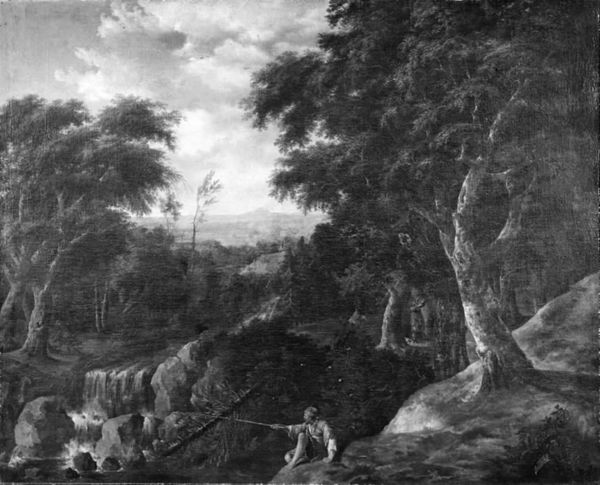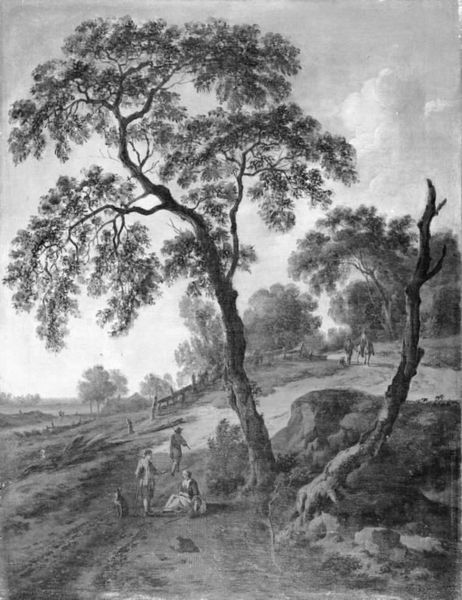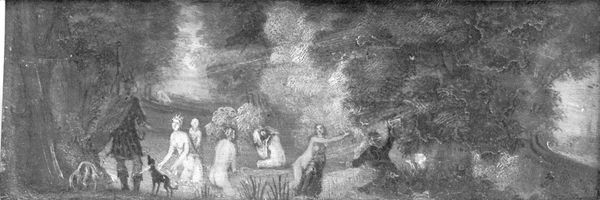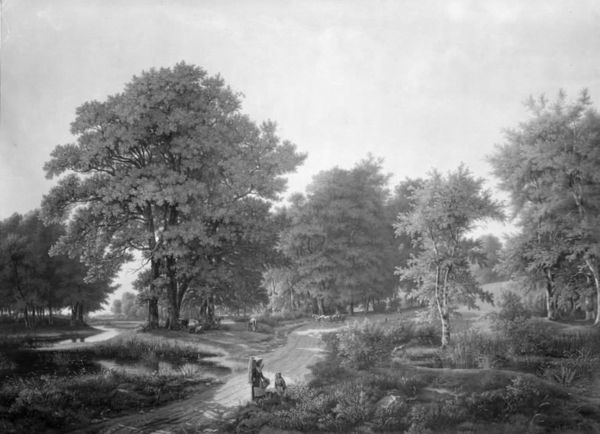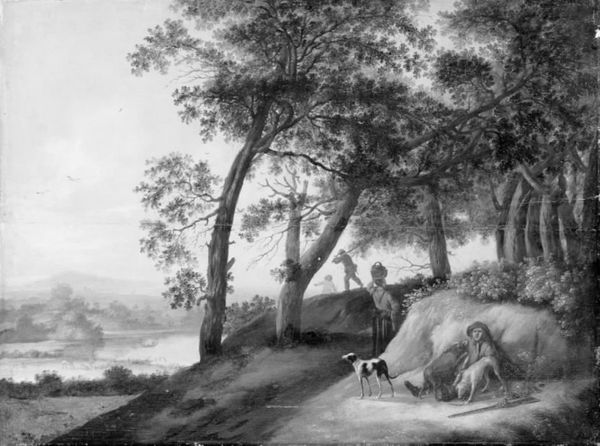
painting, paper
painting
countryside
landscape
paper
nature
romanticism
black and white
monochrome photography
monochrome
realism
monochrome
Dimensions: 47.5 cm (height) x 37.5 cm (width) (Netto)
Editor: Here we have J.C. Dahl's "Study of a Beech at Engelholm in Zealand," created in 1814. It's a landscape painting rendered in monochrome. I am struck by its quiet simplicity; the single beech tree seems to be the silent guardian of this little corner of Zealand. What do you make of this seemingly modest work? Curator: Ah, yes. Modest, perhaps, at first glance. But linger a moment. For me, it whispers of something deeply human – a reverence for nature tinged with melancholic longing. Do you see how Dahl uses the monochrome palette not to diminish, but to amplify the play of light and shadow? Editor: I do notice the shadows—especially the way the light catches the leaves! But melancholy? Tell me more. Curator: The Romantic era had a love affair with ruins and solitary figures against grand landscapes—reminders of mortality and the power of nature. This painting embodies those sentiments. But instead of dramatic vistas, Dahl offers us intimacy, a quiet moment of contemplation in the presence of enduring nature. Is the figure walking away or coming forward, would you say? Editor: That's interesting, because it is really hard to say...walking away, I think. What does that signify? Curator: Perhaps the transient nature of human existence against the backdrop of nature's timelessness. Or a quest, a longing for the solace found in the natural world. Ultimately, Dahl asks us to feel rather than merely to see. What do you feel when you look at this image? Editor: I hadn't thought of it that way! I suppose I initially felt peace, but now I sense a hint of something more profound…a meditation on time and being. Curator: Exactly. It’s not just a tree, it is a moment in time. I find that so compelling about it.
Comments
No comments
Be the first to comment and join the conversation on the ultimate creative platform.
